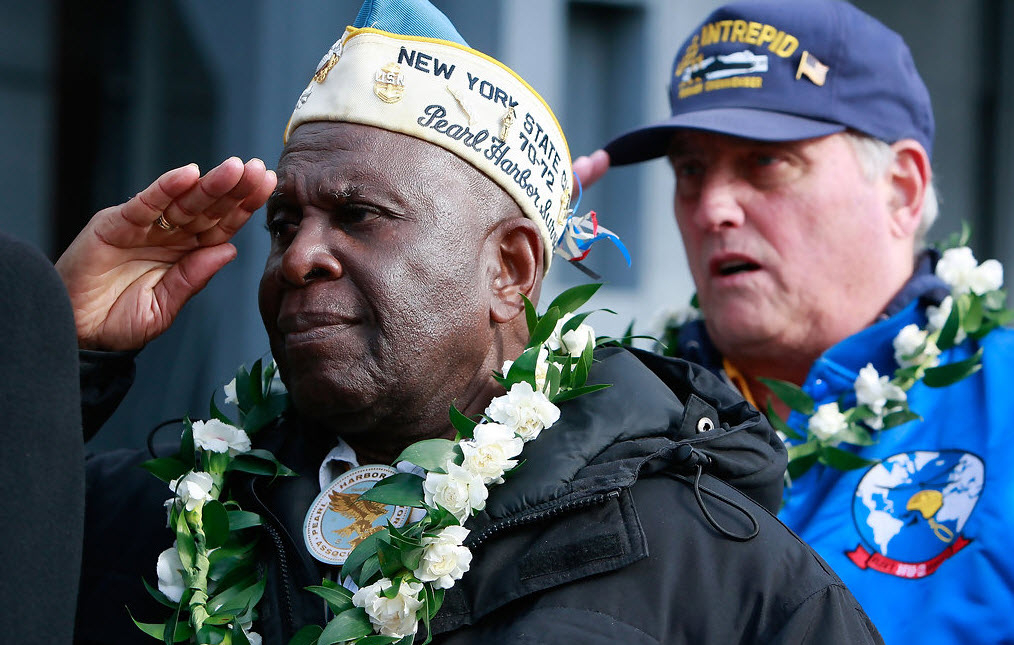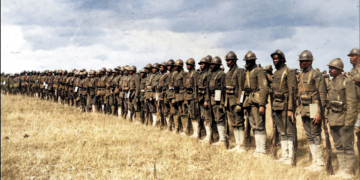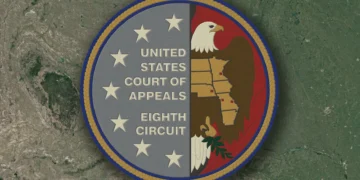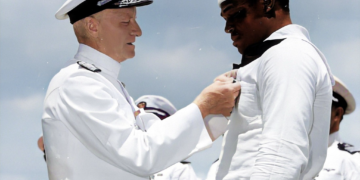July 7, 2025 Story by: Publisher
A significant excerpt from an oral history interview with Clark Simmons, a survivor of the 1941 Pearl Harbor attack aboard the USS Utah, has been removed from the National Park Service (NPS) website.
Simmons’ firsthand account, conducted on December 7, 1998, by researcher Daniel Martinez, provided unique insight into the lives of Black sailors during one of the most pivotal moments in WWII. Though the full oral history has disappeared from the NPS site, portions of it can still be found on military history archives and USS Utah survivor memorial sites.

Photo caption: Clark Simmons, a Pearl Harbor survivor and trailblazing Black Navy serviceman, stands as a powerful voice in recounting the overlooked experiences of African American sailors during World War II. (Photo courtesy of: USS Utah 1941)
Clark Simmons: USS Utah Survivor and Mess Attendant Third Class
Born in Brooklyn, New York, Simmons served as a Mess Attendant Third Class aboard the USS Utah—a former dreadnought converted into a training and target ship moored at Ford Island.
Clark Simmons was one of the few surviving African American veterans who endured the attack on Pearl Harbor while serving aboard the USS Utah on December 7, 1941. Simmons enlisted in the segregated U.S. Navy in 1940 at the age of 18. He was assigned the role of Mess Attendant Third Class, one of the few positions open to Black sailors at the time due to systemic racial segregation in the military.
On the morning of the attack, Simmons was below deck when Japanese torpedoes struck the Utah. The battleship capsized quickly, killing 58 of the crew. Simmons managed to escape the wreckage and survive—marking the beginning of a long life of service and storytelling.
Following his wartime service, Simmons spent decades educating the public about the attack and the overlooked contributions of Black servicemen. He became a regular presence at Pearl Harbor memorial events, often wearing his Navy uniform and speaking candidly about both the heroism of his crewmates and the racism Black sailors faced before and after the war.
Simmons’ presence served as a living reminder of the sacrifice and resilience of Black Americans in World War II—many of whom served in racially segregated units and received little recognition for their roles.
In later years, he participated in interviews with national news outlets and military historians, consistently advocating for full acknowledgment of African American contributions to the war effort. Simmons passed away in 2020 at the age of 95.
Legacy
Clark Simmons is remembered not only for surviving one of the most defining attacks in U.S. history but also for dedicating his postwar life to honoring those who served—especially the forgotten and overlooked. His story adds essential depth to our understanding of World War II and the long fight for equity within the U.S. Armed Forces.
In his detailed interview, Simmons recalls the surprise attack during “Cinderella Liberty,” the torpedoes striking the USS Utah’s hull below the waterline, the swift flooding, and the eight minutes it took for the ship to capsize. He describes the tense moment of boarding via portholes with fellow crew members, followed by abandoning ship and swimming to safety.
The Missing NPS Excerpt

Photo caption: Clark Simmons, a USS Utah survivor and World War II veteran, recalls the morning of December 7, 1941, during a 1998 interview once hosted by the National Park Service—now removed from their public archive.
The detailed transcript of his December 7, 1998 interview, once hosted on the NPS site, included a rich Q&A about his life aboard the Utah, his motivations for enlisting, and his emotions at the time of the attack. An excerpt on ussutah1941.org retains lines such as:
“Well, I was off that whole weekend… and one of the fellows… said, ‘The ship in front of us just blew up’… I think they found out that a torpedo had gone through…”
This passage provides nuanced context to Simmons’ military role and highlights systemic issues like racial assignment practices. However, the full transcript accessible via NPS has disappeared, removed sometime before July 2025, raising questions about archival integrity.

Photo caption: WWII Navy veteran Clark Simmons, one of the few surviving African American sailors from the USS Utah at Pearl Harbor, courageously shared his story to preserve the memory of those lost and the legacy of those who served. (Photo courtesy of USS Utah 1941)
Surviving the Records: Military.com & USS Utah Archive
While NPS has removed the content, two public sources preserve Simmons’s memories:
- Military.com article (“USS Utah Sailor Describes…”), with long excerpts from the 1998 interview covering his enlistment, service, firsthand account of torpedoes missing the ship, the rapid flooding, and his evacuation decision.
- USSUtah1941.org, which hosts the interview excerpt and credits its origin in the NPS materials, confirming the original recording was intended for public historical preservation.
Why This Matters
- Historical Integrity & Access
Simmons’s story offers vital representation of Black sailors—many of whom served in overlooked roles—shedding light on both their bravery and the segregation they faced. - Preserving Diverse Narratives
Oral histories enrich public understanding of WWII. Removing them limits educational resources and erodes historical accuracy.
Conclusion
Clark Simmons’s testimony uniquely bridges the personal and historical: a Black hero who survived disaster and rose above systemic barriers—his story deserves permanent visibility. As researchers working on WWII veterans and Pearl Harbor heroes, documenting both what’s preserved and what disappears is essential to maintaining a full account of our shared history.
Source: Military.com / USS Utah 1941

















